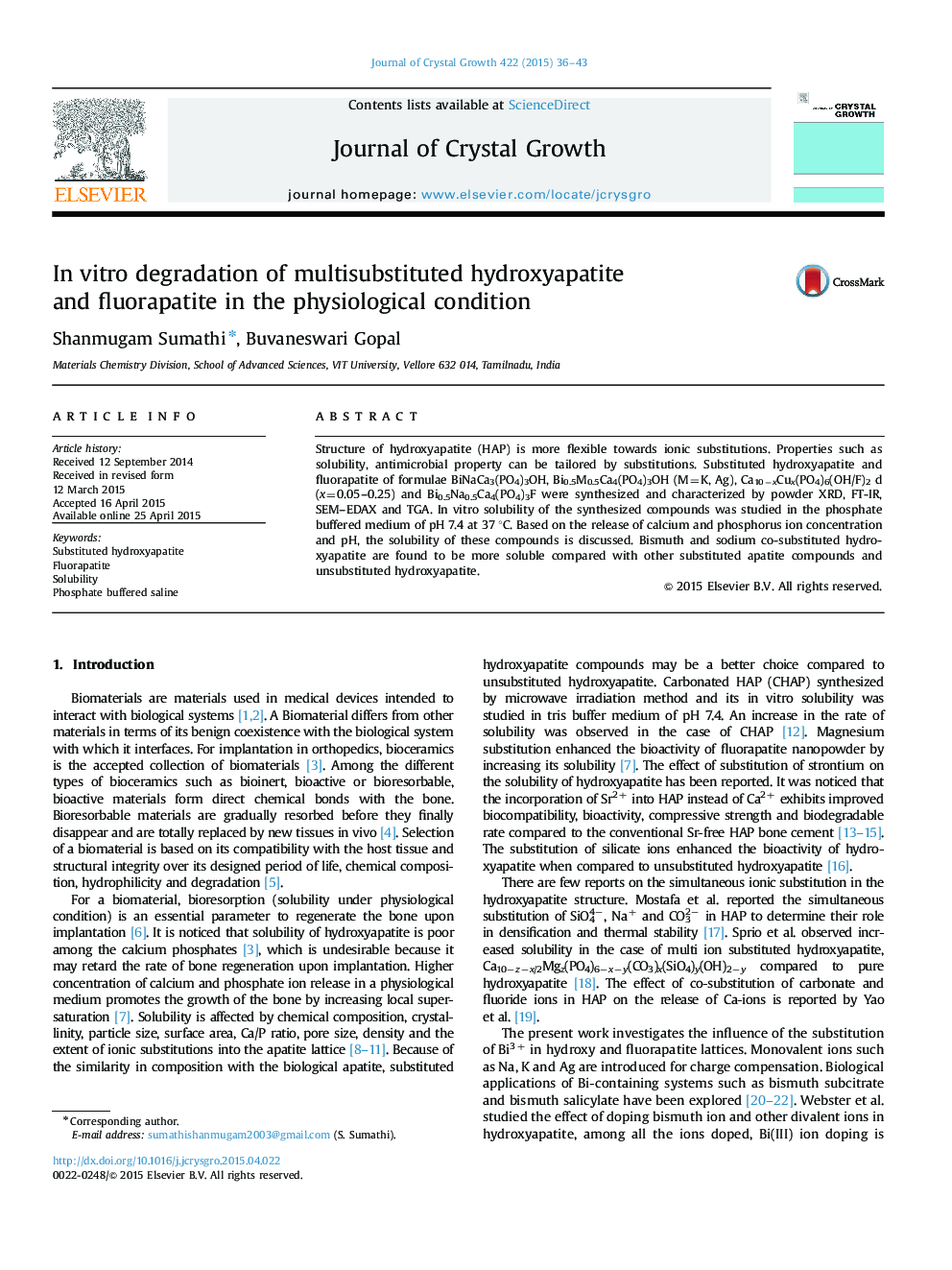| Article ID | Journal | Published Year | Pages | File Type |
|---|---|---|---|---|
| 1790036 | Journal of Crystal Growth | 2015 | 8 Pages |
•In vitro solubility of the synthesized compounds were studied for the first time.•More amount of calcium and phosphate ion release was observed in the case of bismuth and sodium co-substituted hydroxyapatite.•Release of calcium ion was found to be less for the substituted fluorapatite.
Structure of hydroxyapatite (HAP) is more flexible towards ionic substitutions. Properties such as solubility, antimicrobial property can be tailored by substitutions. Substituted hydroxyapatite and fluorapatite of formulae BiNaCa3(PO4)3OH, Bi0.5M0.5Ca4(PO4)3OH (M=K, Ag), Ca10−xCux(PO4)6(OH/F)2 d(x=0.05–0.25) and Bi0.5Na0.5Ca4(PO4)3F were synthesized and characterized by powder XRD, FT-IR, SEM–EDAX and TGA. In vitro solubility of the synthesized compounds was studied in the phosphate buffered medium of pH 7.4 at 37 °C. Based on the release of calcium and phosphorus ion concentration and pH, the solubility of these compounds is discussed. Bismuth and sodium co-substituted hydroxyapatite are found to be more soluble compared with other substituted apatite compounds and unsubstituted hydroxyapatite.
